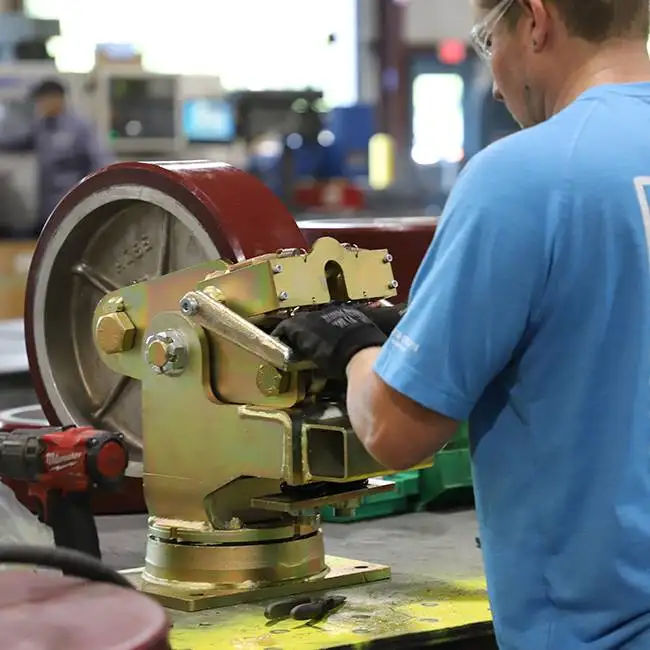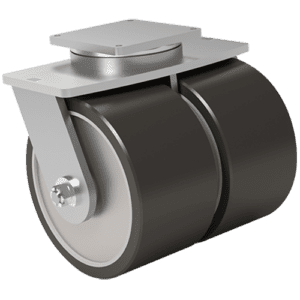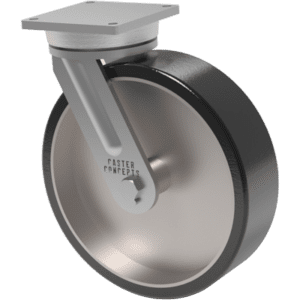

One of the many design variables when considering the best solution for your heavy duty industrial caster application is whether to include a kingpin vs. kingpinless swivel caster construction.

99 Series Kingpin Dual Wheel Caster
Kingpin casters are an original and traditional caster design that has been used for a long time. They feature a design where a kingpin holds together two sets of bearings, one on top and one on the bottom.
A stem, typically a threaded bolt with a slotted nut or sometimes a rivet, is used to fasten the components of the swivel section to the top plate. The kingpin design utilizes a load bearing and thrust bearing to transmit the load.

91 Series Kingpinless Caster
In the quest for the right kingpin vs. kingpinless caster, let’s look at the other side of the coin. While kingpin casters have their advantages, they may not be the best choice for applications with heavy impact loads or requiring minimal maintenance. This is where a kingpinless design offers a unique set of benefits. A kingpinless swivel section has fewer components. And by eliminating the risk of kingpin failure, these casters can contribute to reduced maintenance costs and downtime, resulting in a higher return on investment (ROI) for your material handling operations.
Adjusting the swivel motion of the caster becomes much more difficult. Once the swivel raceways have worn, there is no way to adjust for this wear.
When deciding between a kingpin and a kingpinless swivel caster construction, both designs have their pros/cons. It is essential to fully understand the caster’s intended application, including loading conditions, speeds, duty cycles, floor/ground conditions, and other environmental concerns. When selecting your caster, we encourage you to contact our applications staff at customercentral@casterconcepts.com. You can also give us a call at 888-772-6790.